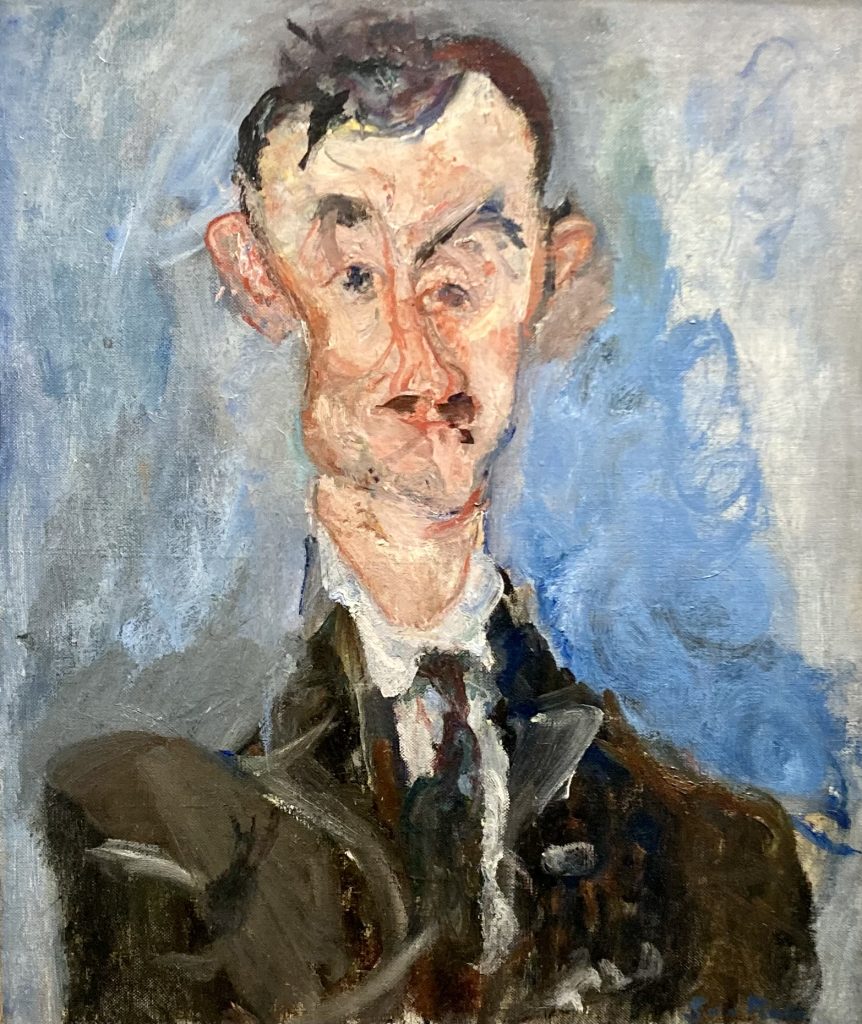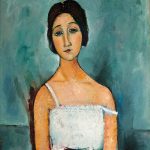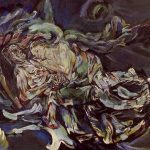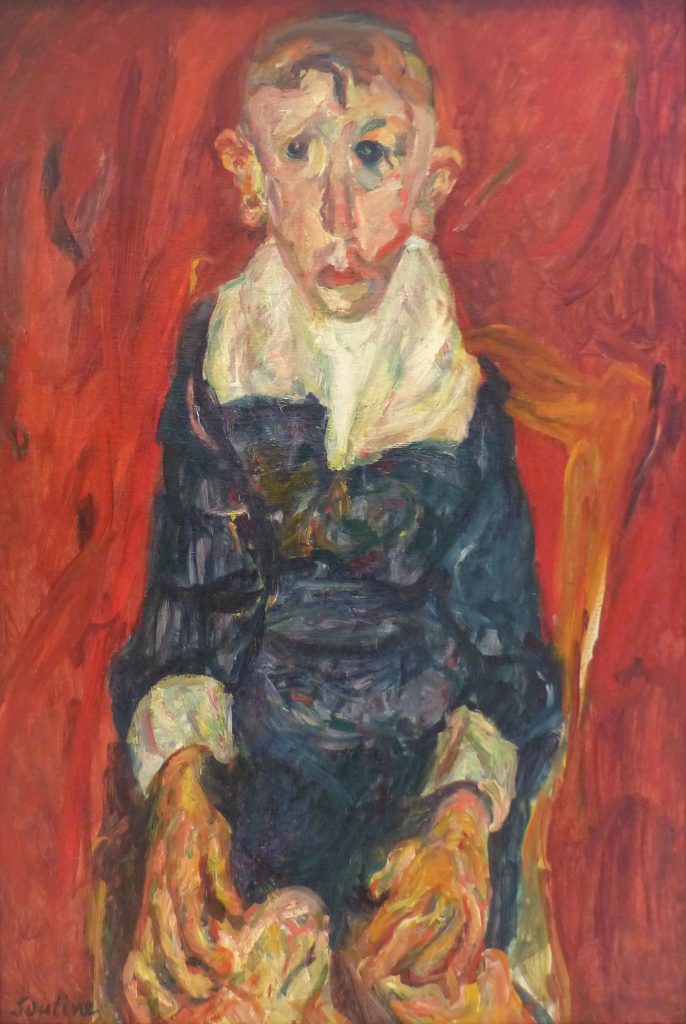
Chaïm Soutine (1893–1943) was a Belarusian-born French painter known for his expressionist and often emotionally charged works. He was part of the School of Paris, a group of artists working in the French capital during the early 20th century. Soutine’s paintings are characterized by their intense colors, distorted forms, and a visceral approach to depicting the human figure and still life.
- Early Life: Chaïm Soutine was born on January 13, 1893, in Smilavichy, near Minsk, in what is now Belarus. He grew up in a Jewish family and showed an early interest in art.
- Move to Paris: In 1913, Soutine moved to Paris, where he became associated with other artists of the School of Paris, including Amedeo Modigliani and Marc Chagall. Paris provided a vibrant and influential artistic environment that would shape Soutine’s career.
- Expressionist Style: Soutine’s work is often classified as expressionist. He painted with a sense of urgency, using bold colors, thick brushstrokes, and a distorted, emotionally charged style. His paintings were known for their raw and unsettling emotional impact.
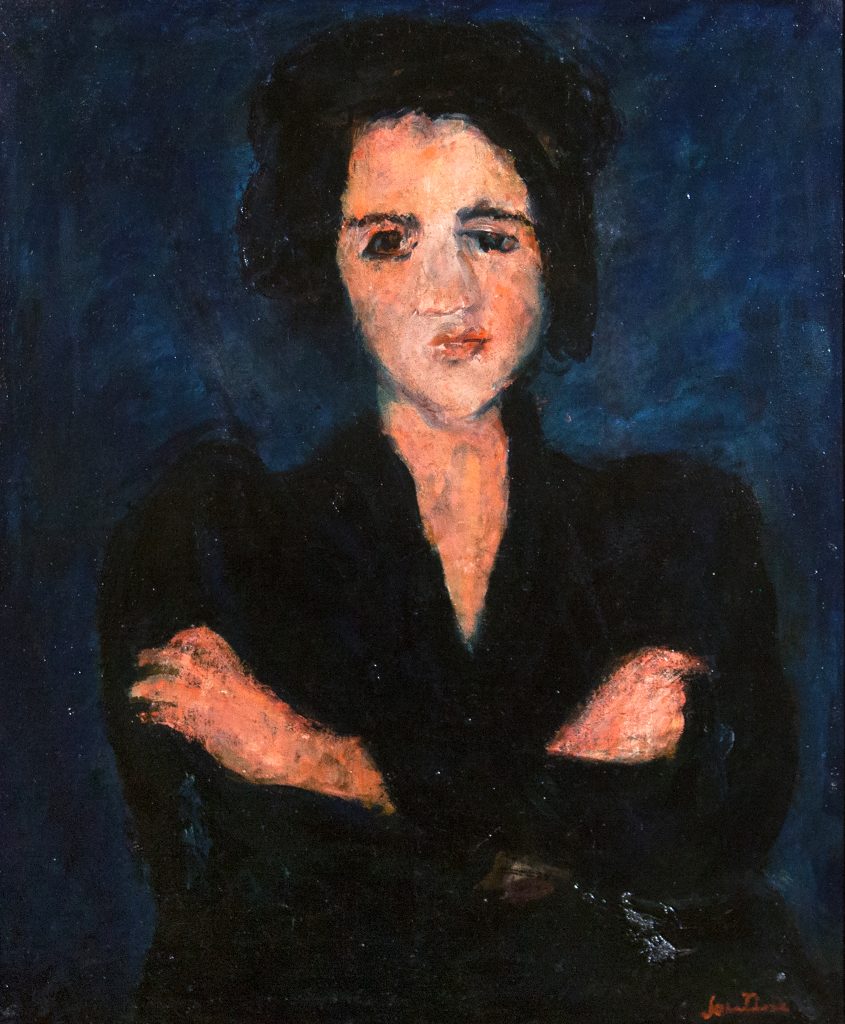
- Subjects: Soutine’s subjects ranged from portraits and landscapes to still lifes. One of his recurring themes was the depiction of carcasses, particularly sides of beef, which became a signature motif in his work. His handling of these subjects was both visceral and symbolic, reflecting his personal experiences and cultural background.
- Influence of Old Masters: Soutine was influenced by the works of the Old Masters, such as Rembrandt and Chaïm Perelman. He admired the way these artists depicted texture and emotion, and he incorporated some of these elements into his own work.
- Relationship with Amedeo Modigliani: Soutine and Modigliani, another artist associated with the School of Paris, developed a close friendship. Modigliani’s influence can be seen in some of Soutine’s early works, but Soutine later developed a style uniquely his own.
- Recognition: Despite facing financial difficulties and living through a tumultuous period marked by World War II, Soutine gained recognition among art collectors and critics. His work became increasingly sought after, and he had successful exhibitions.
- Death: Chaïm Soutine died on August 9, 1943, in Paris, during the German occupation of France. The circumstances surrounding his death remain unclear, but it is believed that his health deteriorated due to stress and malnutrition during the difficult wartime conditions.
- Legacy: Chaïm Soutine’s influence has endured, and his expressive and emotionally charged style has left a lasting impact on the art world. His work has been the subject of retrospectives and exhibitions, and his paintings are held in major museums and private collections around the world.
